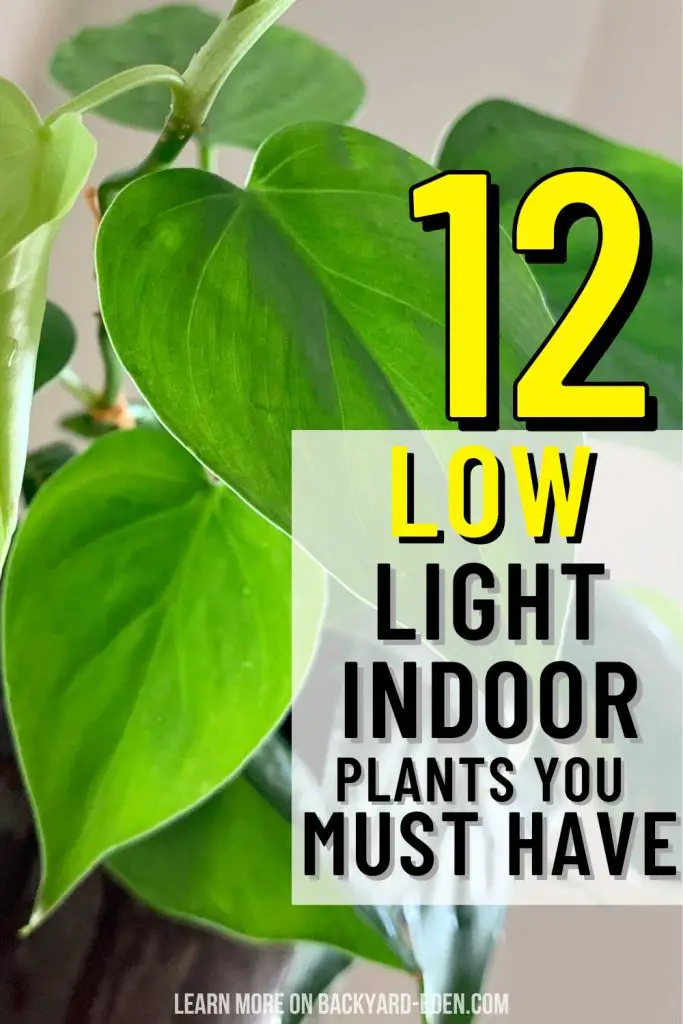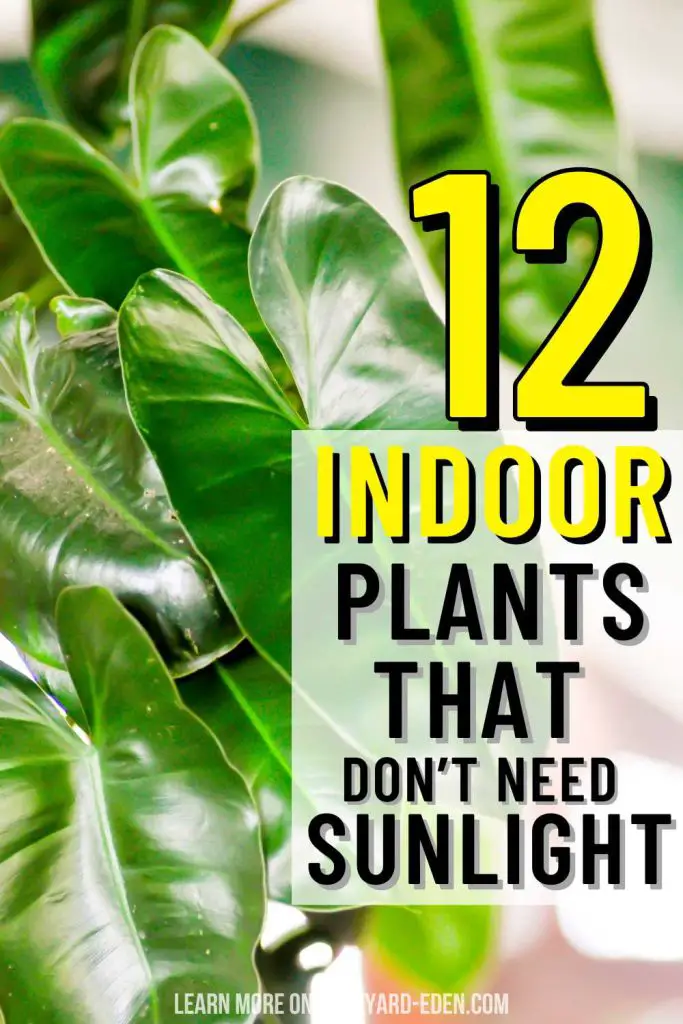As a plant enthusiast, I’ve always admired the resilience of the Snake Plant when it comes to dim-light conditions.
However, there is a whole world of indoor plants that thrive without direct sunlight. From the elegant Peace Lily to the hardy Cast Iron Plant, these green companions can brighten up any corner of your home.
But what makes these plants so special and how can they survive without sunlight? Let’s uncover the secrets behind these shade-loving wonders and explore the benefits they bring to indoor spaces.

This post may contain affiliate links. Read our full disclosure here.
Key Takeaways
- Shade-tolerant houseplants like Snake Plant and ZZ Plant thrive without direct sunlight.
- These plants cleanse the air efficiently, making them perfect for indoor environments.
- They require minimal upkeep and have a pleasing appearance, making them ideal for busy individuals.
- With options like Spider Plant and Chinese Evergreen, indoor spaces can be both attractive and beneficial for health.
Snake Plant
The Serpent Plant thrives in dim-light conditions, making it an excellent choice for indoor spaces with limited sunlight.
This plant isn’t only visually appealing but also brings a range of benefits to your home. One of the most significant advantages of having a Serpent Plant is its air purification benefits.
It’s known to filter out toxins such as formaldehyde and benzene, making the air cleaner and safer for you and your family.
When it comes to growth rate characteristics, the Serpent Plant is a slow but steady grower. This means that it won’t outgrow its space too quickly, making it ideal for smaller indoor environments.
Its slow growth also means less maintenance in terms of pruning and repotting.
The Serpent Plant‘s ability to thrive on neglect makes it a perfect choice for those looking for a low-maintenance plant that still provides numerous benefits.

ZZ Plant
Thriving in dim-light conditions, the ZZ Plant is a sturdy houseplant that needs minimal upkeep. ZZ plant propagation is quite straightforward; you can separate the rhizomes when repotting to generate new plants.
Regarding pruning methods, simply eliminate any yellowing leaves or stems to maintain your ZZ plant’s appearance.
One of the notable advantages of ZZ plants is their air purification characteristics. They can help eliminate toxins like xylene, toluene, and benzene from the air, making them a superb choice for indoor spaces.
Moreover, ZZ plants are recognized for their ability to flourish in diverse conditions, making them ideal for novices or individuals with hectic schedules.
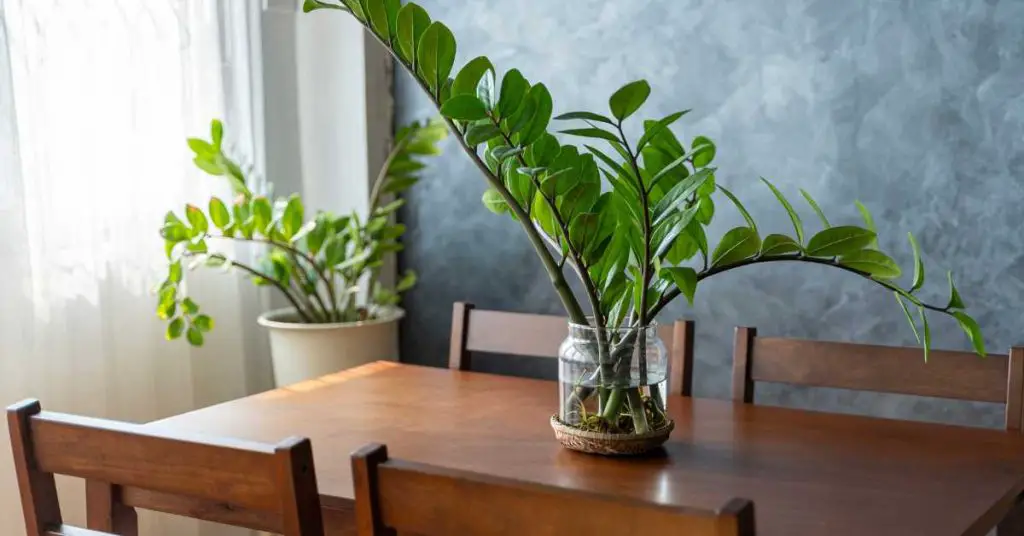
Pothos
Pothos, also known as Devil’s Ivy, is a versatile and low-maintenance houseplant that thrives in various environments.
I’ll share some simple care tips and optimal growing conditions to help you keep your Pothos healthy and vibrant.
Understanding these fundamentals will ensure your Pothos remains a beautiful addition to your indoor area.
Easy Care Tips
With its minimal upkeep requirements and capacity to thrive in various illumination conditions, maintaining a Pothos plant is a simple and fulfilling task.
Regarding watering frequency, ensure the soil is slightly damp but not waterlogged. A well-draining mixture is ideal for Pothos, preventing root rot and enabling the plant to thrive.
Feed your Pothos plant every 4-6 weeks during the growth season with a balanced liquid fertilizer to promote healthy growth.
Pothos plants favor temperatures between 60-85°F (15-29°C), making them suitable for most indoor environments.
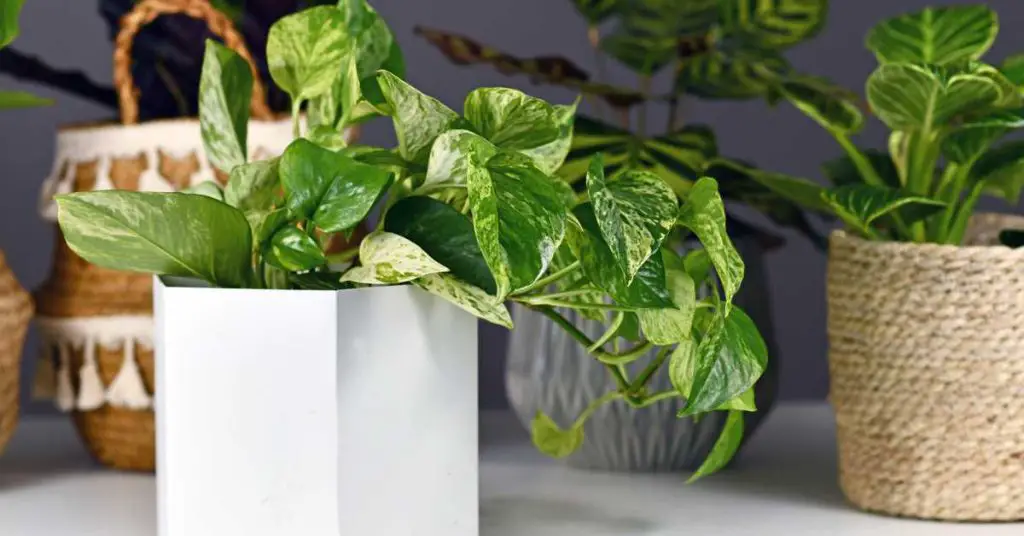
Ideal Growing Conditions
For optimal growth of your Pothos plant, it’s crucial to provide the perfect growing conditions.
When it comes to watering, Pothos plants prefer their soil to dry out between watering sessions. Aim to water them every 1-2 weeks, allowing excess water to drain away. A well-draining potting mix that retains some moisture but doesn’t become waterlogged is ideal for Pothos.
Regarding humidity, these plants thrive in normal household humidity levels but appreciate occasional misting during drier months. Pothos plants are adaptable to various temperature ranges but prefer temperatures between 60-85°F (15-29°C).
Cast Iron Plant
I’ll share some key points about the Cast Iron Plant, ideal for dim conditions.
Understanding its watering needs is crucial to maintain this robust plant thriving indoors.
I’ll also offer practical maintenance tips to ensure your Cast Iron Plant remains healthy and vibrant without the need for direct sunlight.

Low-Light Conditions
In dimly lit conditions, the cast iron plant flourishes with minimal sunlight needs. When picking plants for spaces with limited light, it’s essential to select those that can adjust well, like the cast iron plant. This resilient plant is an ideal choice for poorly lit rooms where other plants might face challenges.
To boost its growth, think about placing it near a window with sheer curtains to allow some natural light to filter through. If windows aren’t available, you can also depend on artificial lighting solutions such as fluorescent or LED lights to supplement the plant’s light requirements.
Watering Requirements
When caring for the Cast Iron Plant, ensure consistent moisture levels in the soil to meet its watering requirements. Overwatering risks can lead to root rot, so it’s crucial to strike a balance. Use well-draining soil to prevent water from pooling around the roots.
The Cast Iron Plant prefers slightly moist soil but can tolerate brief periods of dryness. Monitor the humidity levels in the room, as this can affect the plant’s water needs. If the air is dry, consider placing a tray of pebbles filled with water near the plant to increase humidity.
Additionally, implementing proper drainage solutions, such as ensuring the pot has drainage holes, can help prevent waterlogging and maintain optimal soil moisture levels for your Cast Iron Plant.
Maintenance Tips
To maintain the Cast Iron Plant, routinely remove dust from its leaves using a damp cloth to keep them clean and promote efficient photosynthesis.
Regarding soil moisture, ensure the plant’s soil stays slightly damp but not waterlogged. Water the Cast Iron Plant when the top inch of soil feels dry.
As for fertilizer requirements, nourish the plant with a balanced liquid fertilizer once a month during the growing season (spring and summer). Avoid excessive fertilization, as this can damage the plant.
Peace Lily
With its leaves and elegant white blooms, the Peace Lily is a popular choice for indoor spaces with low light conditions. The Peace Lily offers numerous benefits besides its aesthetic appeal; it’s known for its air-purifying qualities, removing common indoor toxins like formaldehyde and benzene.
Propagating Peace Lilies is relatively easy; they can be divided during repotting to create new plants. It’s important to avoid overwatering, as this can lead to root rot. One common mistake in Peace Lily care is using water that contains fluoride or chlorine, which can cause leaf discoloration. To troubleshoot this issue, consider using distilled water or allow tap water to sit out overnight to let the chemicals dissipate.
Another common problem is browning leaf tips, often caused by underwatering or low humidity levels. To prevent this, ensure the plant is watered adequately and occasionally mist the leaves. By following these care tips and troubleshooting common issues, your Peace Lily can thrive in low light conditions.

Spider Plant
I’ve always admired the Spider Plant for its air-purifying abilities and easy maintenance. These plants are perfect for beginners due to their forgiving nature. With proper care, Spider Plants can thrive indoors without direct sunlight, making them a great addition to any home.
I’ve always been fascinated by the Spider Plant for its air-purifying capabilities and simple upkeep. These plants are ideal for novices because of their forgiving traits. With appropriate attention, Spider Plants can flourish indoors even without direct sunlight, rendering them an excellent choice for any living space.
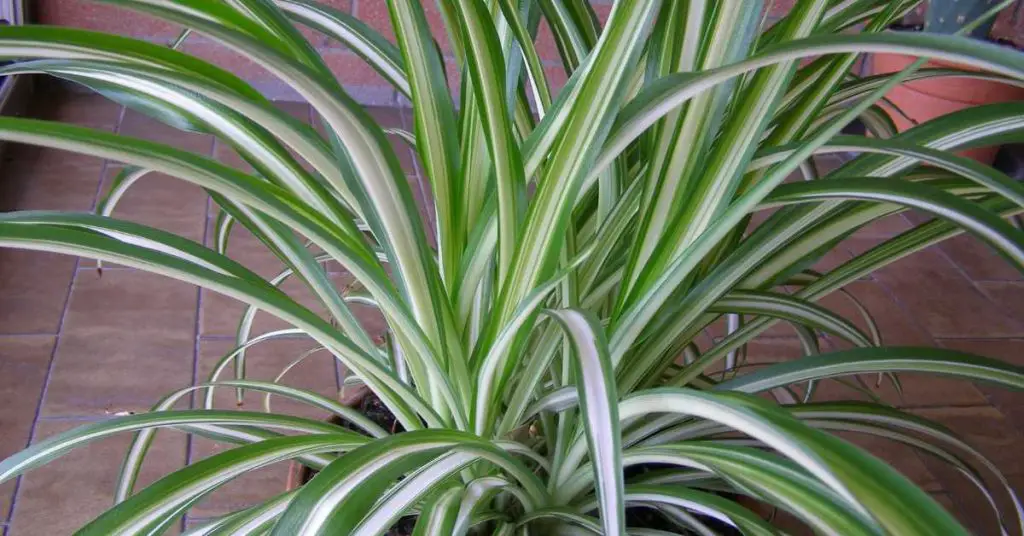
Spider Plant Benefits
Spider plants, also known as Chlorophytum comosum, provide a variety of advantages for indoor spaces. One of the main benefits of spider plants is their air-purifying properties. They’re recognized for effectively eliminating toxins such as formaldehyde and xylene from the air, fostering a healthier indoor environment.
Additionally, spider plants come in variegated varieties, adding a touch of visual interest to any room. These varieties showcase leaves with striking white or yellow stripes, enhancing the aesthetic appeal of the plant.
With their air-cleaning abilities and attractive appearance, spider plants aren’t only beneficial for your health but also contribute to a more inviting and pleasant indoor atmosphere.
Care Tips for Spider Plant
For optimal growth and health of your spider plant, it’s crucial to follow specific care tips tailored to its unique needs. Spider plants thrive in well-drained soil and prefer filtered sunlight. Watering moderately and allowing the soil to dry out between waterings helps prevent root rot.
Spider plant propagation is relatively simple by using the plantlets that grow on long stems, which can be planted in a separate pot.
When dealing with spider plant pests, common ones to watch out for are spider mites and aphids. Regularly inspecting the plant for any signs of pests and gently washing the leaves with a mild soap solution can help keep these nuisances at bay and ensure a healthy spider plant.
Chinese Evergreen
Aglaonema, commonly known as Chinese Evergreen, is a favored choice for indoor plants in low-light settings. This exquisite plant not only brings a touch of green to your space but also provides numerous advantages.
Chinese Evergreen excels at cleansing the air, removing pollutants, and fostering a healthier indoor environment. In Feng Shui, it’s believed to attract good fortune and positive energy, making it an excellent addition for those seeking to enhance the harmony of their living space.
Furthermore, Chinese Evergreen serves as an ideal embellishment for office spaces, instilling a sense of calm and serenity in your work environment. Its abundant green foliage can help alleviate stress and cultivate a more tranquil ambiance, leading to increased productivity and overall well-being.
With its minimal upkeep needs and ability to thrive in low-light conditions, Chinese Evergreen is a superb option for individuals in search of a beautiful and beneficial indoor plant.

Parlor Palm
Shifting from the Chinese Evergreen, another great choice for dim indoor settings is the Parlor Palm. When it comes to Parlor palm care, it’s vital to remember that this plant thrives in filtered light and prefers consistently damp soil.
Water your Parlor Palm when the top inch of soil feels dry, but be cautious not to overwater as this can lead to root rot. Regularly misting the leaves can help increase humidity, which this plant enjoys.
If you’re interested in Parlor palm propagation, one method is division. When repotting your mature Parlor Palm, gently separate the offshoots that have grown at the base and plant them in their pots.
Ensure these new plants have the same light and moisture conditions as the parent plant for successful growth.
With proper care, Parlor Palms can bring a touch of tropical charm to your indoor space without demanding direct sunlight.

Dracaena
When tending to a dragon tree plant in dim-light conditions, it’s crucial to provide proper watering and avoid overwatering to prevent root rot. Dragon trees are splendid houseplants that can thrive with minimal sunlight.
To ensure your dragon tree stays healthy, water it when the top inch of the soil feels dry. Make sure not to let the plant sit in water, as this can lead to root rot. Indoor gardening with dragon trees is rewarding, as these plants are resilient and can adapt to various conditions.
Dust the leaves regularly to help the plant photosynthesize efficiently. If you notice the tips of the leaves turning brown, it might be a sign of underwatering or low humidity. Consider misting the plant or using a pebble tray to increase humidity levels.
With proper plant care, your dragon tree can beautify your indoor space and contribute to a healthier environment.
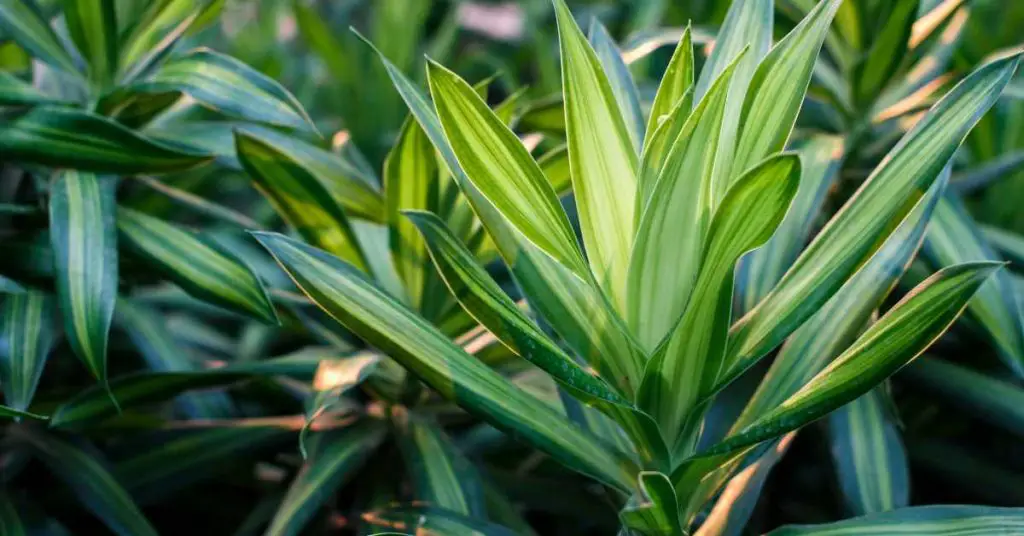
Philodendron
One popular and low-maintenance indoor plant that thrives in dim-light conditions is the Philodendron. As a plant enthusiast, I find Philodendrons to be versatile and easy to care for, making them an excellent addition to any indoor space.
When it comes to Philodendron reproduction, the most common method is through shoot cuttings. Simply snip a healthy shoot just below a leaf joint and place it in water until roots develop, then transfer it to soil. This process isn’t only rewarding but also a great way to expand your plant collection.
There are numerous Philodendron types to choose from, each with its unique features. The heart-leaf Philodendron, with its heart-shaped leaves, is a classic favorite. For those looking to add a touch of elegance, the velvet-leaf Philodendron is an excellent choice.
No matter which variation you opt for, Philodendrons are sure to bring beauty and greenery into your home without demanding much sunlight.

Calathea
As a plant enthusiast, I’ve found that caring for Calathea plants in dimly lit environments can be a rewarding experience due to their unique foliage patterns and vibrant colors. Calathea care is relatively low maintenance; they thrive in filtered light and require consistently damp soil.
To propagate Calathea, division is the most common method. Simply divide the plant at the root during repotting, ensuring each new plant has roots attached.
Calathea comes in various striking varieties such as the Calathea Orbifolia with its silver-green leaves and the Calathea Medallion featuring round, patterned leaves.
When it comes to decorating with Calathea, consider grouping different Calathea varieties together to create a diverse and visually appealing indoor garden.
Their colorful leaves can add a pop of brightness to any room, making them excellent choices for spaces with limited sunlight.
Additionally, Calathea plants are known for their air-purifying qualities, making them both aesthetically pleasing and beneficial for indoor air quality.
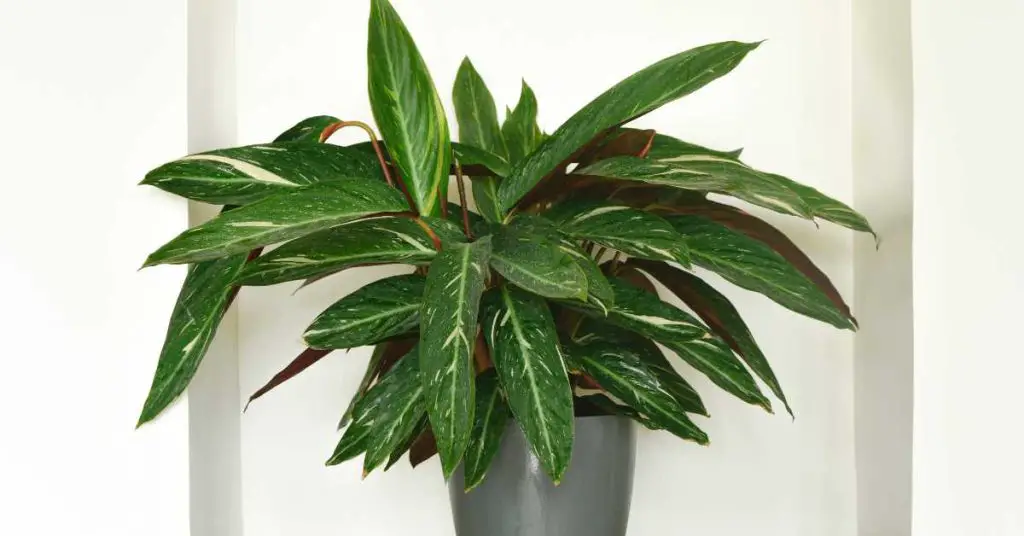
Maidenhair Fern
Exploring another excellent choice for dim-light indoor plants, the Maidenhair Fern stands out for its fragile fronds and graceful appearance. When caring for a Maidenhair Fern, it’s crucial to pay attention to watering frequency and pot size.
These ferns prefer consistently damp soil but can’t tolerate standing water, so a well-draining pot is essential. Water when the top inch of soil feels dry to the touch, typically about once a week, but this may vary depending on the humidity levels in your home.
Maintaining proper soil moisture is key to the Maidenhair Fern’s health. The soil should be kept evenly damp, but be cautious not to overwater, as this can lead to root rot.
Fertilize your Maidenhair Fern sparingly, about once a month during the growing season, using a balanced liquid fertilizer diluted to half strength.
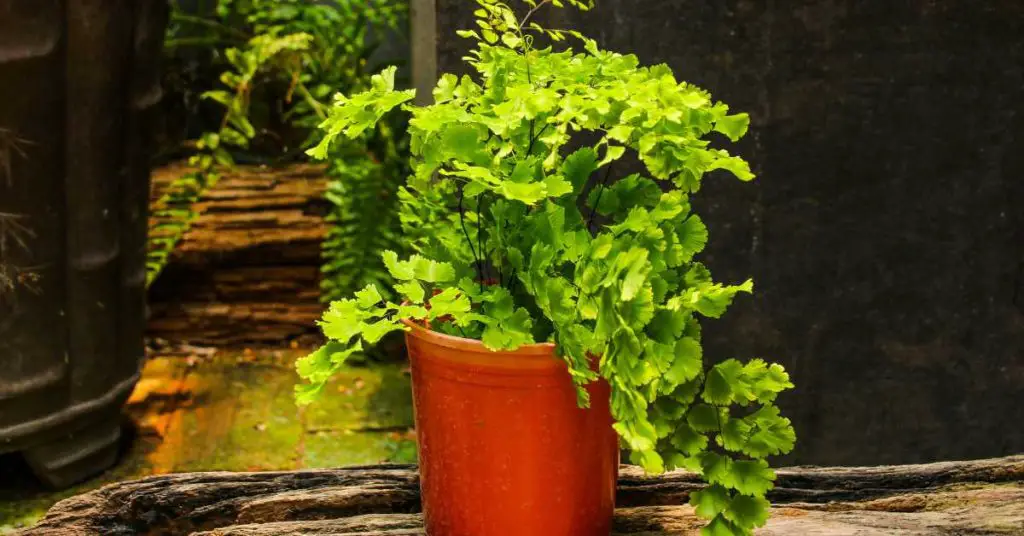
Frequently Asked Questions
Can These Indoor Plants Be Placed in a Bathroom With No Natural Light?
Certainly, I’d opt for plants like snake plants or peace lilies for a bathroom with no natural light. They thrive in low light and help purify the air. Just remember to keep the humidity levels in check for their best growth.
Do Any of These Plants Require Special Soil or Fertilizers to Thrive Indoors?
I recommend using loamy potting mix for these shade plants. A moderate liquid fertilizer diluted to half strength can assist them indoors. Regularly monitor moisture levels; they prefer slightly moist soil, not waterlogged.
Are Any of These Plants Toxic to Pets or Children if Ingested?
Pet safety is crucial when selecting indoor plants. Some common houseplants like aloe vera, snake plants, or spider plants can be toxic to pets if ingested. Keep them out of reach to ensure pet and child safety.
How Often Should These Indoor Plants Be Watered and How Can I Tell if They Are Getting Too Much or Too Little Water?
Water indoor plants based on individual needs. Check soil moisture by sticking a finger in the soil; if it’s dry, water. Adjust watering schedule accordingly. Signs of overwatering include yellowing leaves, while under-watered plants wilt.
Can These Plants Be Propagated Easily to Create New Plants?
Growing these plants is a fulfilling process. Basic methods like stem cuttings or division can produce new plants effortlessly. Advantages include saving money and exchanging with friends. Imaginative uses range from giving away homemade plant babies to expanding your plant collection.
Conclusion
In summary, when seeking indoor plants that thrive without sunlight, consider options like the Snake Plant, ZZ Plant, Pothos, Cast Iron Plant, Peace Lily, Philodendron, Calathea, Maidenhair Fern, and Devil’s Ivy.
These plants not only add a touch of greenery to your space but also require minimal sunlight and maintenance.
With the right care and attention, you can enjoy the beauty and benefits of these low-light indoor plants in your home.

